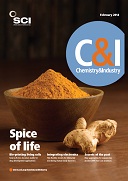Globally, around 150bn new banknotes are printed every year, while replacing unfit currency that is too soiled or damaged for further use costs almost $10bn/year, according to the authors of a new report in the journal Industrial & Engineering Chemistry Research (Doi: dx.doi.org/10.1021/ie403307y).
Almost 150,000t of old notes must also be disposed of.
However, laundering dirty money could be a job for supercritical CO2, say the report authors, who point out that sCO2 – which has the density of a liquid but the behaviour of a gas – can remove human oils and contaminants, including bacteria like E. coli, from a range of world currencies without damaging security features. Work by the researchers at Brown University and the company Spectra Systems found that sCO2 at 60°C and 5000 psi effectively scrubbed clean bundles of 100 banknotes, removing 4% of their weight.
‘We place the banknotes in the supercritical fluid and provide convection or ultrasound and allow oxidised oils – sebum transferred from human hands – to dissolve into the fluid,’ report author and Spectra Systems ceo Nabil Lawandy explains. ‘The fluid is then removed and since CO2 is a gas at room temperature and pressure, the notes are left dry and the fluid CO2 takes the oils and other soiling moieties with it. The CO2 is fully recyclable and costs are extremely low.’
The technique was developed by Spectra Systems and could be on ready for commercialisation in around nine months. US dollars, pounds sterling, Chinese yuan and Indian rupees have all been cleaned.
Previous research at the Dutch Central Bank had shown that yellowing of paper money occurs as oxidised sebum builds up. Removing these human oils led to better responses by machine reading technology. Lawandy expects a tripling of the average life of a note and says they are ‘also working on additives that can restore mechanical strength to notes during the process’.
‘It is an interesting article with a new fresh approach on the subject,’ notes Marly van Horck, cash policy advisor with the Dutch Central Bank. ‘Our work has shown that soiling is the major defect for banknotes to become unfit,’ she says, adding that sebum is not the only cause. Notes also become more porous as they age – increased porosity takes away their crisp, new note feel.
sCO2 has been used to extract flavours molecules from hops and for decaffeination of coffee, but cost could be a drawback, according to solvent chemist Andrew Hunt at York University, UK. ‘This does look like a good way of recycling currency. But I think it needs more thought in terms of what it will cost and the energy required and whether that will outweigh the actual cost of producing the material.’




